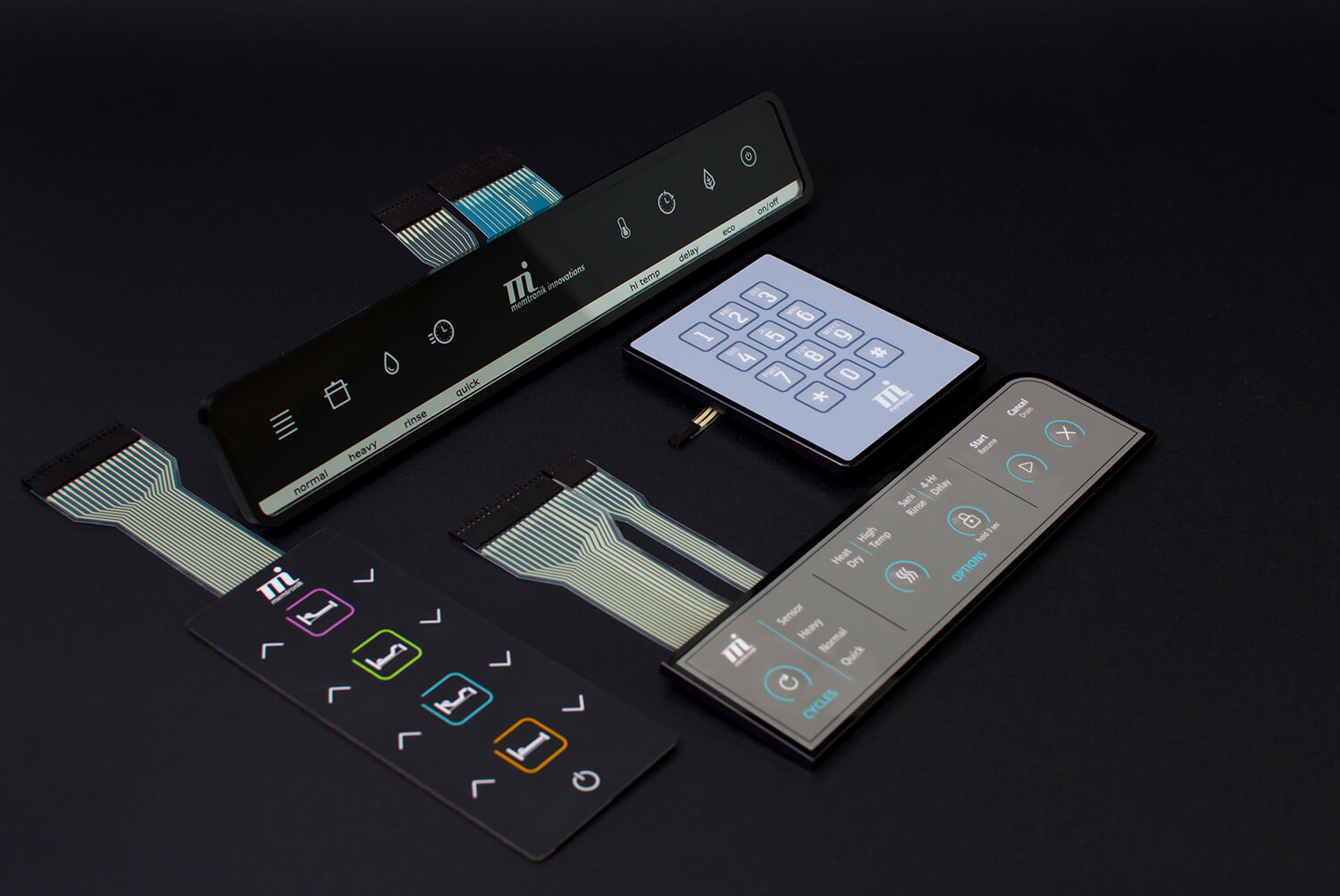Over the last few years, interest in touch screens has continued to grow. From cellphones to televisions and even refrigerators, our everyday lives are controlled by taps and swipes. However, before this technology hit the market, membrane switches reigned supreme over human-machine interactions! And while it’s impossible to ignore the benefits of using touch screens, membrane switches and capacitive switches are hardly a thing of the past!
We obviously aren’t referring to the old keypads you used to see on microwaves 20 years ago! Thanks to modern design, backlighting, and new manufacturing processes, this type of keyboard is re-emerging as an excellent contender.
As is the case with any development stage, it’s important to evaluate your needs before you get started on choosing a human-machine interface (HMI). If you are currently looking at creating a product, know that membrane switches or capacitive switches can meet your needs without breaking the bank, and without diminishing the user experience. Here’s how!
Take things one step further with eye-catching design
Think of the graphic overlay on your membrane switch/capacitive switch as a blank canvas you can use to showcase your creativity, your brand, and your personality. With so many different materials and techniques available, your options are as limitless as your imagination.
You can also make any membrane switch or capacitive switch your own using ink: metallic, pearlescent, velvet, or grainy finishes, fluorescent or thermochromic colours…
Finally, integrating backlighting and icon design increases the user-friendliness of your control panel solution. Beyond their aesthetic qualities, icons that are clean and well-thought-out can replace text elements, so you can adapt your graphic overlay to any market without having to translate anything!
Advanced processes you can rely on
Over the last few years, many technological advancements have led to cheaper, more flexible membrane switches and capacitive switches. The following are among the most prominent.
- Integration of electronic components with the membrane itself. For example, among others, 7-segment displays that can be integrated independently of the PCB. These screens can therefore be placed anywhere, reducing several design constraints.
- Glue printing. This technique, which our team has mastered, allows for glue to be printed directly onto the surface. No need to purchase an adhesive from a third party and apply it manually.
- No limit to membrane/capacitive switch size. Whether you need a single button or 100, the product is so thin and modular that dimensions will never be an issue. If the use of space is a problem for your interface, this is a great solution.
When it’s time to design your next device, think about all these possibilities before opting for another solution by default. If you’re looking for ideas, contact our design and engineering team to develop custom human-machine interface HMI solutions.

